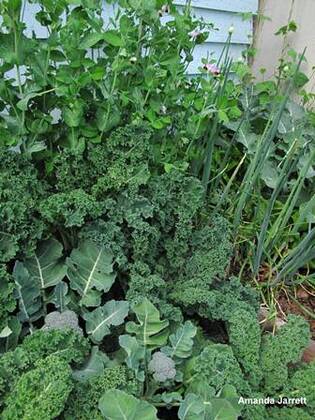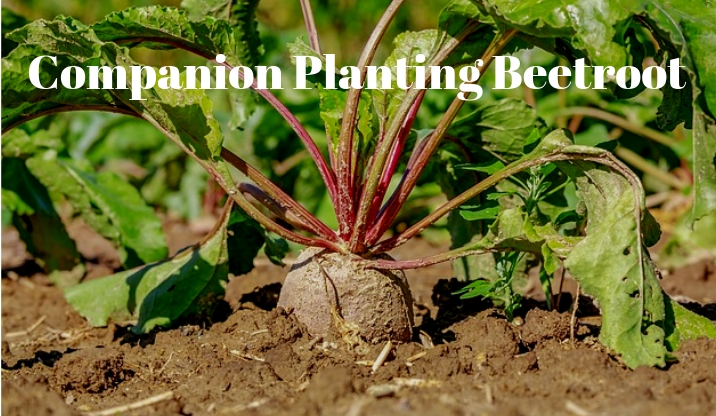The Beetroot Companion Planting Guide That Will
The Beetroot Companion Planting Guide That Will
Improve Your Beet Yields
Decrease Pest and Disease Problems
Create a More Beautiful Garden
Introduction
Beets are a delicious and nutritious root vegetable that is easy to grow. They are also a great companion plant for many other vegetables. Companion planting is the practice of planting different types of plants together in order to benefit each other. When you plant companion plants together, they can help to improve each other's growth, deter pests and diseases, and create a more beautiful garden.
In this guide, we will discuss the best companion plants for beets. We will also talk about the benefits of companion planting and how to do it properly. By the end of this guide, you will know everything you need to know about companion planting beets and how to use it to improve your garden.
Main Content
What are Companion Plants?
Companion plants are plants that benefit each other when they are planted together. They can do this in a number of ways, such as:
- Attracting beneficial insects. Some plants attract beneficial insects, such as ladybugs and lacewings, which help to control pests. For example, planting beets near onions can help to attract these beneficial insects, which can help to control pests such as aphids and spider mites.
- Distracting pests. Some plants have strong scents that can distract pests, making them less likely to attack other plants. For example, planting beets near garlic can help to distract pests such as carrot flies.
- Improving soil quality. Some plants, such as legumes, can fix nitrogen in the soil, which can benefit other plants. For example, planting beets near beans can help to improve the nitrogen levels in the soil, which can benefit both the beets and the beans.
- Shading roots. Some plants, such as lettuce, can provide shade for the roots of other plants, which can help to keep them cool and moist. For example, planting beets near lettuce can help to prevent the beet roots from overheating and becoming stressed.
Benefits of Companion Planting
There are many benefits to companion planting, including:
- Increased yields. Companion planting can help to increase the yields of your crops. For example, one study found that tomatoes grown near basil had a 25% higher yield than tomatoes grown without basil.
- Decreased pest and disease problems. Companion planting can help to decrease pest and disease problems. For example, planting marigolds near tomatoes can help to repel nematodes, which are a common pest of tomatoes.
- Improved soil quality. Companion planting can help to improve soil quality. For example, planting legumes, such as peas or beans, can fix nitrogen in the soil, which can benefit other plants.
- More beautiful garden. Companion planting can help to create a more beautiful garden. For example, planting flowers, such as marigolds or nasturtiums, among your vegetables can help to attract beneficial insects and deter pests.
How to Plant Companion Plants
When planting companion plants, there are a few things you need to keep in mind:
- Plant the right plants together. Not all plants are compatible with each other. Do some research to find out which plants are good companion plants for beets.
- Plant the plants in the right location. Consider the sun exposure, soil type, and water needs of the plants when deciding where to plant them.
- Space the plants properly. Make sure to space the plants properly so that they have enough room to grow.
- Water the plants regularly. Companion plants need regular watering, especially during hot, dry weather.
- Fertilize the plants as needed. Companion plants may need to be fertilized, especially if the soil is poor.
Conclusion
Companion planting is a great way to improve the health and productivity of your garden. By planting beets with the right companion plants, you can increase your yields, decrease pest and disease problems, and improve the overall health of your garden.
Beetroot is a delicious and nutritious vegetable that is relatively easy to grow. One way to improve your chances of success is to plant it with companion plants. Companion planting is the practice of planting certain types of plants together in order to benefit each other. Some good companion plants for beetroot include:
- Alliums: Onions, garlic, leeks, and chives all help to repel pests that can damage beetroot, such as carrot flies and cabbage loopers.
- Brassicas: Broccoli, cabbage, cauliflower, and Brussels sprouts all help to improve the soil drainage around beetroot plants.
- Lettuce: Lettuce helps to suppress weeds and attract beneficial insects to the garden.
- Marigolds: Marigolds help to repel nematodes, which are microscopic worms that can damage beetroot roots.
For more information about beetroot companion plants, please visit Gardenia Inspiration. This website provides a comprehensive guide to companion planting, including information on the specific benefits of each type of companion plant.
FAQ of beetroot companion plants
5 Most Frequently Asked Questions About Beetroot Companion Plants
Beetroot is a relatively easy crop to grow, but it can benefit from being planted alongside certain companion plants. Here are the 5 most frequently asked questions about beetroot companion plants, along with valuable insights and solutions:
Question 1: What are some good companion plants for beetroot?
Answer: Some good companion plants for beetroot include:
- Beans: Beans are nitrogen-fixing plants, which means they can add nitrogen to the soil. This can help beetroot to grow better.
- Broccoli: Broccoli is a strong-smelling plant that can deter pests from beetroot.
- Cabbage: Cabbage is another strong-smelling plant that can deter pests from beetroot.
- Lettuce: Lettuce can help to suppress weeds around beetroot plants.
- Onions: Onions can help to repel root-knot nematodes, which are a common pest of beetroot.
Question 2: What are some bad companion plants for beetroot?
Answer: Some bad companion plants for beetroot include:
- Carrots: Carrots and beetroot are both root vegetables, and they can compete for space and nutrients.
- Kale: Kale can shade beetroot plants, preventing them from getting enough sunlight.
- Peas: Peas can attract aphids, which are a common pest of beetroot.
- Potatoes: Potatoes can attract potato blight, which is a fungal disease that can also affect beetroot.
- Spinach: Spinach can attract slugs, which are a common pest of beetroot.
Question 3: How far apart should beetroot plants be planted?
Answer: Beetroot plants should be planted about 3 inches apart. This will give them enough space to grow and develop properly.
Question 4: How much sun do beetroot plants need?
Answer: Beetroot plants need full sun, at least 6 hours of sunlight per day. If they don't get enough sunlight, they will not grow as well.
Question 5: How often should beetroot plants be watered?
Answer: Beetroot plants need to be watered regularly, especially during hot, dry weather. Water them deeply, so that the water reaches the roots.
Image of beetroot companion plants
- Carrots: Carrots and beets are both root vegetables that benefit from being planted together. Carrots help to repel pests that target beets, and beets help to improve the soil quality for carrots.

- Cucumbers: Cucumbers and beets are both heavy feeders, so they can benefit from being planted together. The cucumbers will help to shade the beets, which can help to protect them from the sun.

- Kale: Kale and beets are both cool-season crops that can be planted together. Kale can help to deter pests from beets, and beets can help to improve the soil quality for kale.

- Lettuce: Lettuce and beets are both leafy greens that can be planted together. Lettuce can help to shade the beets, which can help to protect them from the sun.

- Spinach: Spinach and beets are both cool-season crops that can be planted together. Spinach can help to deter pests from beets, and beets can help to improve the soil quality for spinach.

Post a Comment for "The Beetroot Companion Planting Guide That Will"